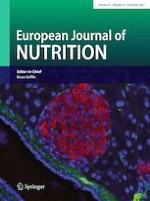Published in:

Open Access
09-07-2022 | Sarcopenia | Original Contribution
Association between dietary inflammatory index score and muscle mass and strength in older adults: a study from National Health and Nutrition Examination Survey (NHANES) 1999–2002
Authors:
Lingzhi Chen, Jingjing Ming, Tianyi Chen, James R. Hébert, Peng Sun, Li Zhang, Hongya Wang, Qingkuo Wu, Cancan Zhang, Nitin Shivappa, Bo Ban
Published in:
European Journal of Nutrition
|
Issue 8/2022
Login to get access
Abstract
Purpose
Chronic low-grade systemic inflammation affects muscle protein metabolism. The dietary inflammatory index (DII®) is a tool designed to assess the inflammatory potential of the diet. The available data on the association between DII and sarcopenia are limited. We aimed to investigate the association of the DII with components of sarcopenia in individuals over 50 years of age.
Methods
This cross-sectional study used the National Health and Nutrition Examination Survey (NHANES) 1999–2002 dataset. Body composition was measured, and isokinetic strength of the knee extensors (peak force) was evaluated. Low muscle mass and strength were defined using sex-specific thresholds. Energy-adjusted DII (E-DII™) scores were calculated using 24-h dietary recall data. Regression models were fit to evaluate the association between E-DII scores and low muscle mass and low muscle strength, alone and combined.
Results
Mean age of study participants was 62.1 ± 9.5 years, and 138 participants (7.4%) belonged to the combination group of low muscle mass and low muscle strength. In multivariable-adjusted regression models, higher E-DII score was associated with lower appendicular skeletal muscle index (ASMI) (β = − 0.03, P < 0.001, P trend <0.001), and lower peak force (β = −2.15, P = 0.04, P trend = 0.01) and higher likelihood for these components combined (OR = 1.12, 95% CI 1.01–1.25, P = 0.03).
Conclusion
Higher E-DII score is associated with lower muscle mass and muscle strength, and increased likelihood for the combination of low muscle mass and low muscle strength in older adults. This has important implications for healthy aging.





